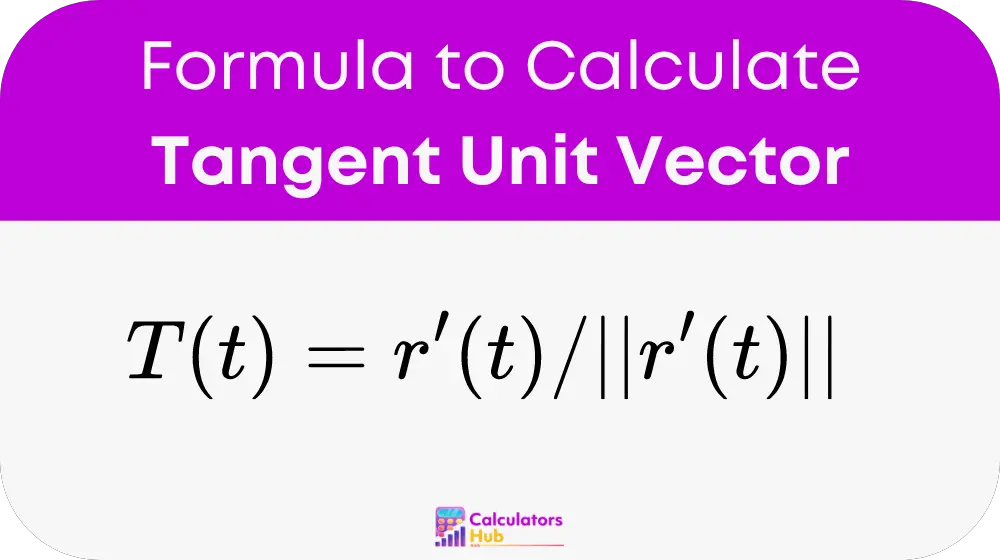The Tangent Unit Vector Calculator computes the tangent unit vector of a parametric curve at a specific point. This vector represents the direction of the curve at that point and is normalized to have a magnitude of one. The calculator helps users understand the behavior of curves and trajectories in various applications, such as motion analysis and path planning.
Formula of Tangent Unit Vector Calculator
The Tangent Unit Vector Calculator uses the following formula:

Here’s a breakdown of the formula:
- r(t) is the position vector-value function of a parametric curve. It represents the location of a point on the curve at a specific time t.
- r'(t) is the derivative of the position vector-valued function. It represents the velocity vector, indicating the instantaneous direction and speed of the moving point along the curve.
- ||r'(t)|| is the magnitude (length) of the velocity vector. It normalizes the velocity vector to ensure the tangent unit vector has a magnitude of one.
General Terms and Conversion Table
Understanding common terms related to the Tangent Unit Vector Calculator can be helpful. Here are some essential terms and a conversion table for quick reference:
| Term | Definition |
|---|---|
| Position Vector | A vector that represents the location of a point in space. |
| Velocity Vector | A vector that indicates the speed and direction of a point. |
| Magnitude | The length of a vector. |
| Normalization | The process of adjusting a vector to have a magnitude of one. |
Example of Tangent Unit Vector Calculator
Let’s consider an example to understand how the Calculator works.
Given the parametric curve r(t) = <t^2, t^3>, we want to find the tangent unit vector at t = 1.
- First, compute the derivative of r(t): r'(t) = <2t, 3t^2>
- Evaluate r'(t) at t = 1: r'(1) = <21, 31^2> = <2, 3>
- Calculate the magnitude of r'(1): ||r'(1)|| = sqrt(2^2 + 3^2) = sqrt(4 + 9) = sqrt(13)
- Finally, find the tangent unit vector T(1): T(1) = r'(1) / ||r'(1)|| = <2, 3> / sqrt(13) = <2/sqrt(13), 3/sqrt(13)>
Therefore, the tangent unit vector at t = 1 is <2/sqrt(13), 3/sqrt(13)>.
Most Common FAQs
A tangent unit vector is a vector that represents the direction of a curve at a specific point and has a magnitude of one. It provides insight into the behavior of the curve at that point.
The tangent unit vector is used in various fields such as physics, engineering, and computer graphics to analyze the direction and behavior of curves and trajectories.
Yes, the Tangent Unit Vector Calculator can handle any parametric curve as long as the position vector-valued function r(t) and its derivative r'(t) can be determine.